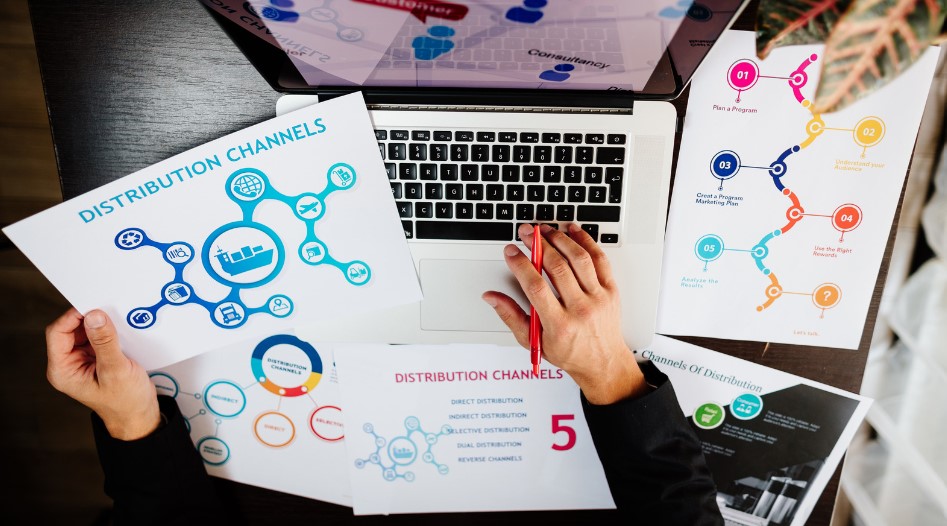Selling a product as a new business is, on the face of it, a simple thing. This is fundamentally true, particularly for those new entrepreneurs with a track record in sales. However, there is more to a business model than finding customers and selling to them. There are nuances to product sales methods, that necessitate different approaches and considerations regarding everything from marketing to per-unit profits. Understanding distribution channels and the difference between them is half the battle when it comes to effective order fulfilment – but what do you need to know?
What is a Distribution Channel?

Essentially, a distribution channel is the route of the product from source to market. More specifically, it is a way of describing how a product, from the perspective of a given business, makes its way from them to its final destination with a consumer, client or business. It is a question that fundamentally refers to the downstream, examining the path forward for a product.
There are various different ways a product can do this, meaning there are multiple different kinds of distribution channels a product may take. In some cases, the distribution channel a company utilises is the only viable option; in others, a business may have the opportunity to choose their channel or channels.
Types and Levels of Distribution Channel

Distribution channels can be handily understood via two distinct framings: types and levels. When thinking of channels in terms of types, there are three. The first is direct, which describes a channel with no ‘links’ in the chain; the consumer can access the product direct from the manufacturer. The second is indirect, which describes any channel with one or more links in the chain. A manufacturer sells to a retailer, who then sells to the consumer. A hybrid channel combines the two, giving options to the consumer.
In terms of distribution channel levels, there are four. These levels generally refer to the number of steps the product takes to reach the consumer. Level 0 is a direct distribution channel, while Level 1 describes a retailer middleman. Level 2 involves the sale from manufacturer to wholesaler or distributor, who then manage the re-sale on to retailers before finally reaching consumer hands. Level 3 adds a middle-man stage between wholesale and retail, where an independent business might collect and group products for onward sale.
Picking the Right Channel

Picking the right distribution channel for your product means engaging with the different merits that certain channels can provide. Direct distribution means you control every aspect of the sale, including being able to control delivery and logistics. With direct distribution you can more easily offer same-day delivery, where retailers often cannot.
However, adding additional levels to a channel can help in other ways. Introducing intermediary steps reduces the gross profit (GP) on individual items, but can dramatically increase volume sales. Retailers have multiple locations or bespoke infrastructure to boost awareness and sales, while wholesalers are better placed to place your product with retailers. The latter is particularly helpful if you are a small business with little experience building retailer relations or with little industry footprint.









Leave feedback about this